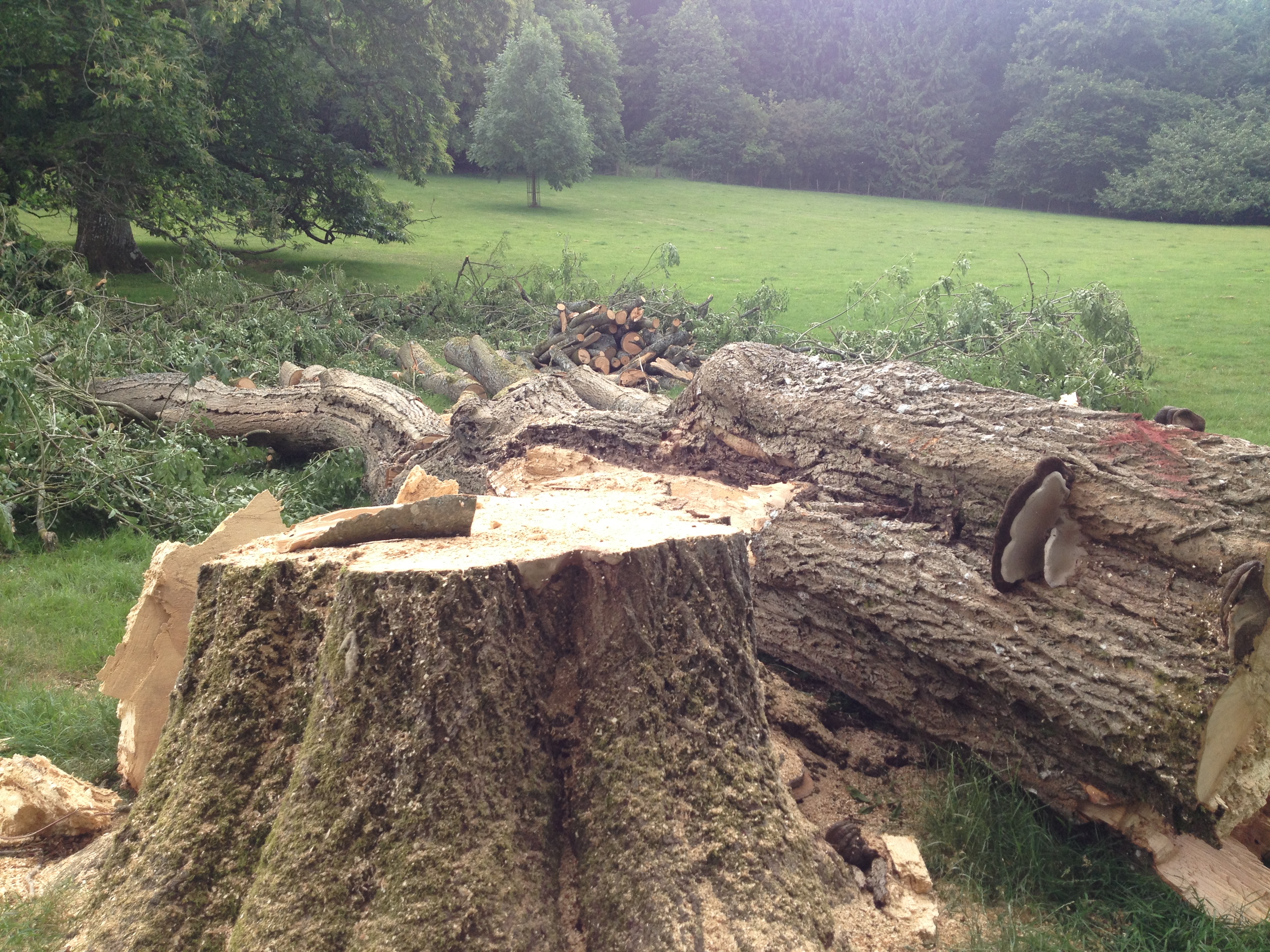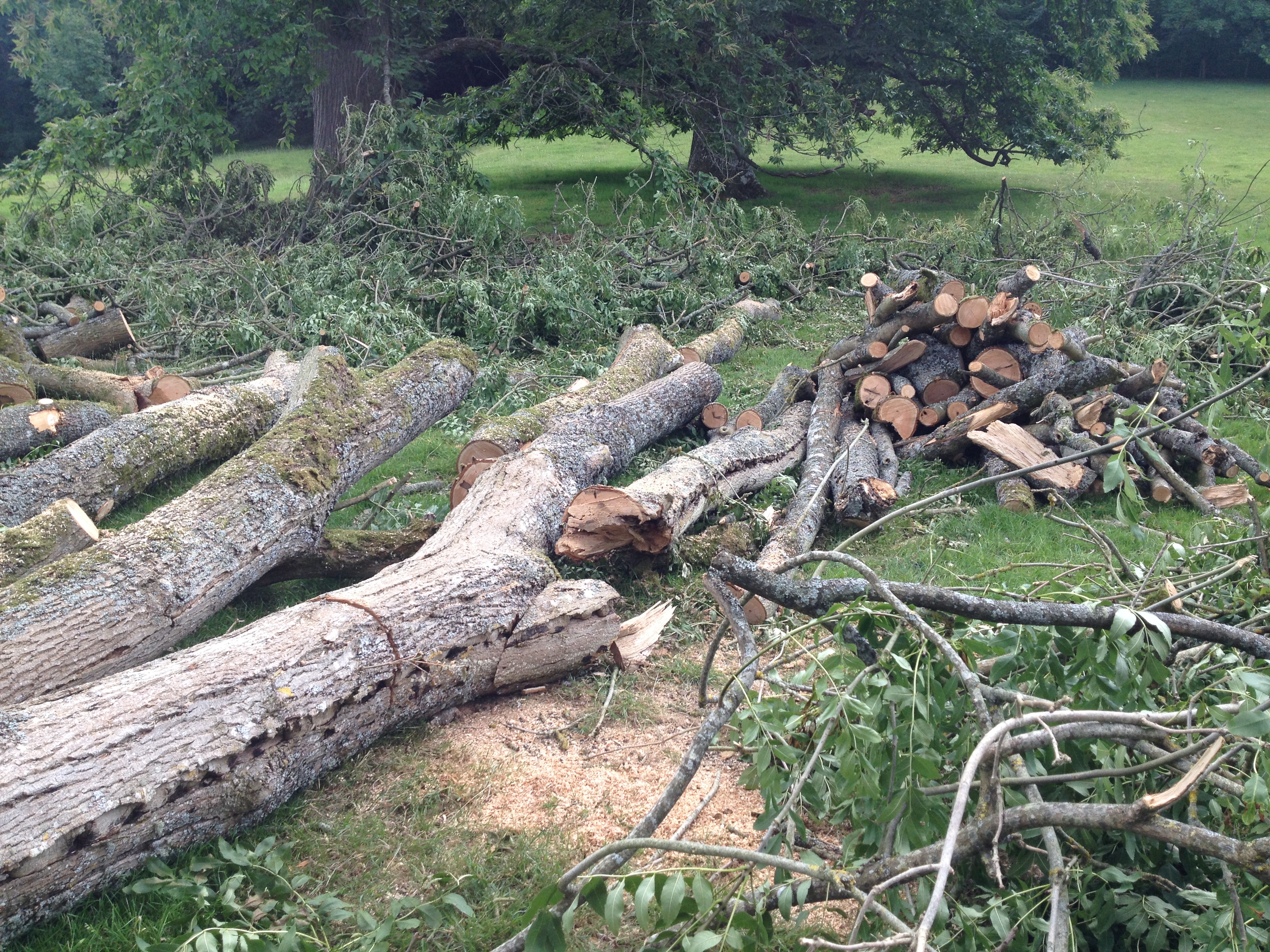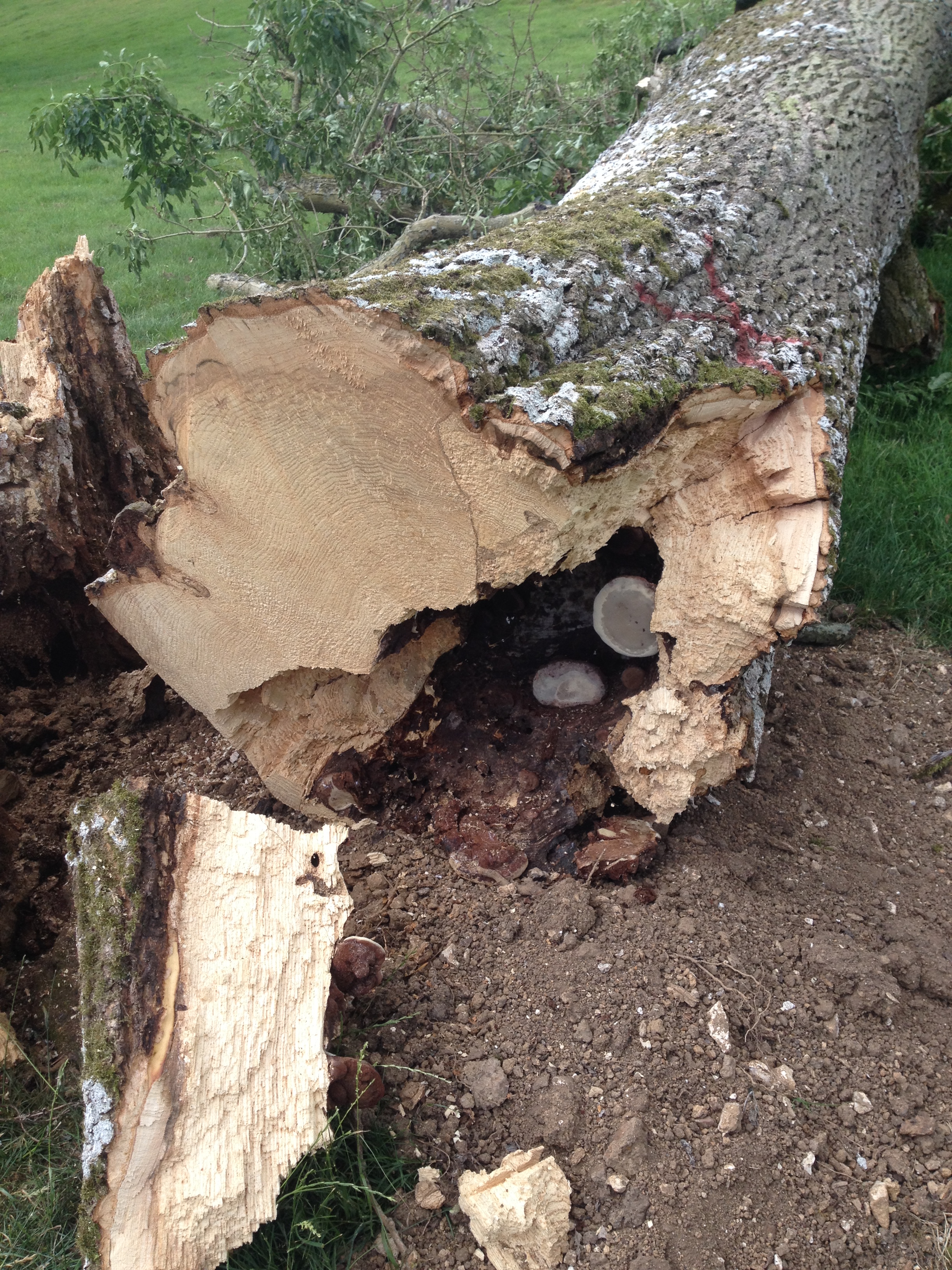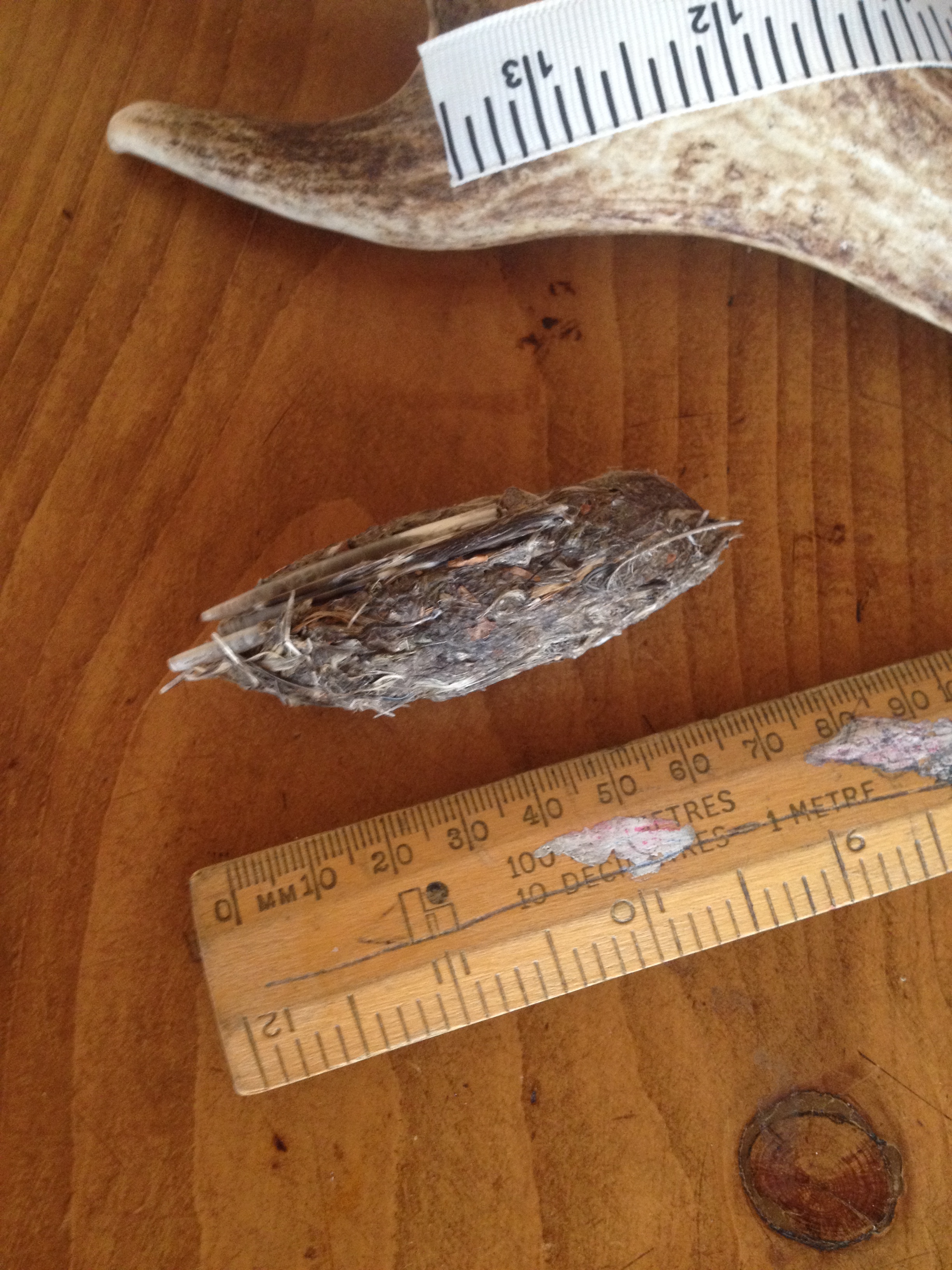Seams, ridges, holes, pellets.

In the park by the footpath, two big old ash trees are felled. They dropped branches in storms and sometimes, on still, benign days. I inspect their prone forms, paying my respects, investigating a canopy I wouldn’t normally have access to. Their deep grooved trunks and branches supported lichens and insects, sought after by the thin, curved bill of treecreepers. Hazelnuts are jammed in the grooves, posted like coins, by nuthatches.
The broad trunks are stepped with the sloping, ridged roofs of southern bracket fungus – a village upended by the fall; the dusky, spore-powdered angle of them protects the thick white lip beneath, so it gleams in contrast, like a horse’s shod hoof.

One tree had been compromised by lightning strike, a black plumb line scorched down a major upright. Woodpeckers had made inroads, leaving a series of giant, neatly spaced needle holes down the black seam. The other tree had been de-stabilised from the north by a lone badger, tunnelling in between the toes of its roots, burrowing under its foundations. But felling the tree also exposed the extent of rot: the undersides of more bracket fungus, growing in the space where the heartwood had been, glow like small moons or flying saucers all the way up the close, warm, velvet-dark of the hollow trunk. There are still leaves on both trees. The smell of chainsaw exhaust lingers, curdles with the flowers of neighbouring sweet chestnuts; a distinctive scent of ivy bloom, unwashed linen and something else …

There are owl pellets on the ground, below where the birds have roosted. I tease one apart – it appears to have blackbird feathers in it. Perhaps I know the bird that coughed up this cylindrical sarcophagus? One late, sultry night, with the bedroom windows flung wide, there was a sudden whumpf of a soft-buffered landing against glass and sill – then the frantic beating of wings and distress of a blackbird. By morning, it was obvious the hen bird had gone from the nest in the jasmine, along with her second brood.

Another pellet lying on the fallen tree is not so easy to decipher. It looks like a classic owl pellet, grey, full of fur, feather, bone and beetle wing cases; yet it is far bigger than anything a tawny owl would cough up. Short-eared owls are here in winter and long-eared owls pass through at any time. Could it be? I pocket it, get out my books, search the internet, tweet. When the answer ricochets back instantly from my phone, it is from a friend who knows: foxy loxy. Sat on my writing desk is a fox poo. Old, unsmelling, but nevertheless … I just can’t fathom how it ended up on the side of a recently felled tree. Such mysteries, such connections.
Leave a Reply to nicolawritingCancel reply